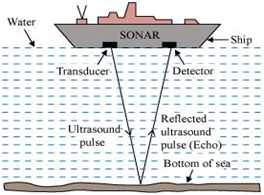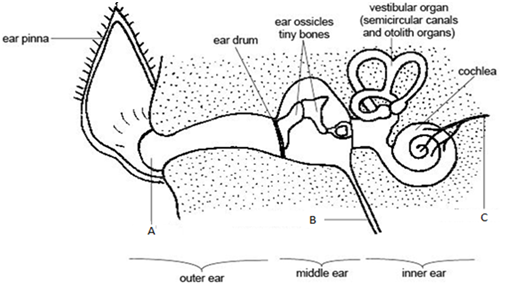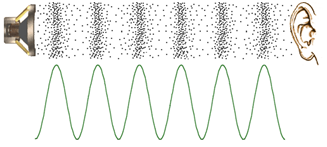Quiz Summary
0 of 30 Questions completed
Questions:
Information
You have already completed the quiz before. Hence you can not start it again.
Quiz is loading…
You must sign in or sign up to start the quiz.
You must first complete the following:
Results
Results
0 of 30 Questions answered correctly
Your time:
Time has elapsed
You have reached 0 of 0 point(s), (0)
Earned Point(s): 0 of 0, (0)
0 Essay(s) Pending (Possible Point(s): 0)
Categories
- Not categorized 0%
- 1
- 2
- 3
- 4
- 5
- 6
- 7
- 8
- 9
- 10
- 11
- 12
- 13
- 14
- 15
- 16
- 17
- 18
- 19
- 20
- 21
- 22
- 23
- 24
- 25
- 26
- 27
- 28
- 29
- 30
- Current
- Review
- Answered
- Correct
- Incorrect
-
Question 1 of 30
1. Question
The sound can travel in air when:
CorrectIncorrect -
Question 2 of 30
2. Question
We can distinguish between a man’s voice and a woman’s voice of the same loudness even without seeing them. This is due to a characteristic of sound which measures the shrillness of sounds. Can you choose the correct unit of the quantity on which this characteristic of sound depends?
CorrectIncorrect -
Question 3 of 30
3. Question
A key of mechanical piano is first struck gently and then struck again but much harder this time. What kind of change in sound will you observe in the second case:
CorrectIncorrect -
Question 4 of 30
4. Question
The echo-receiver of a sonar attached to a ship, receives the echo from the bottom of sea 4 seconds after the ultrasonic waves were sent into the sea.
 If the speed of sound in water is 1500 m/s, then what is the depth of the sea?CorrectIncorrect
If the speed of sound in water is 1500 m/s, then what is the depth of the sea?CorrectIncorrect -
Question 5 of 30
5. Question
Before the main shock waves, the earthquake produces the characteristic sound waves which some animals like rhinoceros can hear. Can you guess the kind of sound waves produced here?
CorrectIncorrect -
Question 6 of 30
6. Question
Given below is the diagram of human ear.
 Choose the correct labeling of the parts A, B and C.CorrectIncorrect
Choose the correct labeling of the parts A, B and C.CorrectIncorrect -
Question 7 of 30
7. Question
On increasing the temperature, the speed of sound in air:
CorrectIncorrect -
Question 8 of 30
8. Question
Loudness measures the sound energy reaching the ear per second and depends on the amplitude of the sound wave. What is the unit used to measure the loudness of sound?
CorrectIncorrect -
Question 9 of 30
9. Question
We can easily distinguish between the sounds of the different singers even without having seen them. This is all due the different quality or timber of their sounds. On what factor does the quality of sound depend?
CorrectIncorrect -
Question 10 of 30
10. Question
Before playing the orchestra in a musical concert, a sitarist tries to adjust the tension and pluck the string suitably. By doing so, he is adjustingi. Amplitude of the sound
ii. Frequency of the sitar string with the frequency of other musical instruments
iii. Intensity of sound
iv. Loudness of soundCorrectIncorrect -
Question 11 of 30
11. Question
The bats can fly in the darkness of night without colliding with the other objects by emitting special sounds while flying. Which characteristic of sound is used by the bats to navigate?
CorrectIncorrect -
Question 12 of 30
12. Question
The sound travels from particle to particle in the form of vibrations and has different speeds in different mediums.
 The maximum speed of vibrations which produce audible sound will be in:CorrectIncorrect
The maximum speed of vibrations which produce audible sound will be in:CorrectIncorrect -
Question 13 of 30
13. Question
Which of the following can produce longitudinal as well as transverse waves under different conditions?
CorrectIncorrect -
Question 14 of 30
14. Question
If the speed of a wave is 380 m/s and its frequency is 1900 Hz, then the wavelength of the wave will be:
CorrectIncorrect -
Question 15 of 30
15. Question
You must have seen the doctor checking the sounds produced in the chest or heartbeat of a patient using a medical instrument called Stethoscope. On what principle does this Stethoscope work?
CorrectIncorrect -
Question 16 of 30
16. Question
For hearing a distinct sound, the time interval between the original sound and the reflected one must be at least:
CorrectIncorrect -
Question 17 of 30
17. Question
The persistence of sound in an auditorium is the result of repeated reflections of sound and is called:
CorrectIncorrect -
Question 18 of 30
18. Question
The speed v, frequency υ, and wavelength λ, of sound are related by the equation:
CorrectIncorrect -
Question 19 of 30
19. Question
The speed of sound is maximum in:
CorrectIncorrect -
Question 20 of 30
20. Question
Our ears are sensitive to sound frequencies between:
CorrectIncorrect -
Question 21 of 30
21. Question
Which of the following waves are produced by bats?
CorrectIncorrect -
Question 22 of 30
22. Question
Maximum tolerable sound is:
CorrectIncorrect -
Question 23 of 30
23. Question
Sound waves are:
CorrectIncorrect -
Question 24 of 30
24. Question
In SONAR, we use:
CorrectIncorrect -
Question 25 of 30
25. Question
Sound travels in the air if:
CorrectIncorrect -
Question 26 of 30
26. Question
When we change feeble sound to loud sound we increase its:
CorrectIncorrect -
Question 27 of 30
27. Question
In the curve half the wavelength is:
 MCQ Questions for Class 9 Science Chapter 12 Sound Q12CorrectIncorrect
MCQ Questions for Class 9 Science Chapter 12 Sound Q12CorrectIncorrect -
Question 28 of 30
28. Question
An earthquake produces which kind of sound before the mainshock wave begins:
CorrectIncorrect -
Question 29 of 30
29. Question
Infrasound can be heard by:
CorrectIncorrect -
Question 30 of 30
30. Question
Fill in the blank
-
Sound travels as a wave through a material medium.
CorrectIncorrect -

